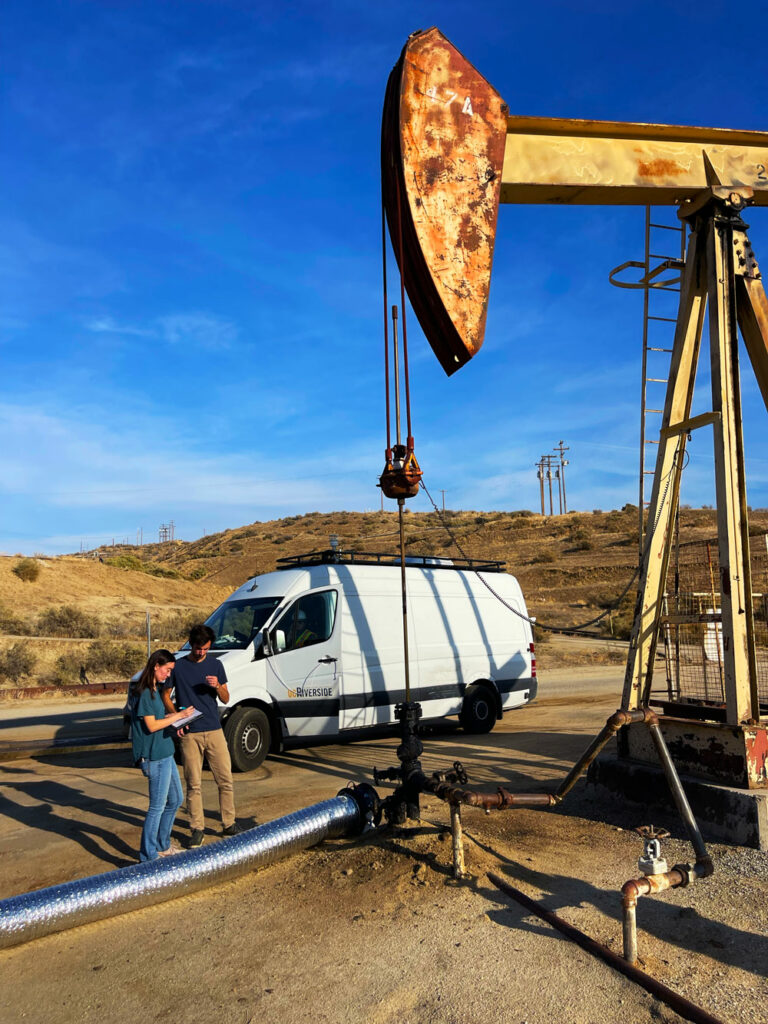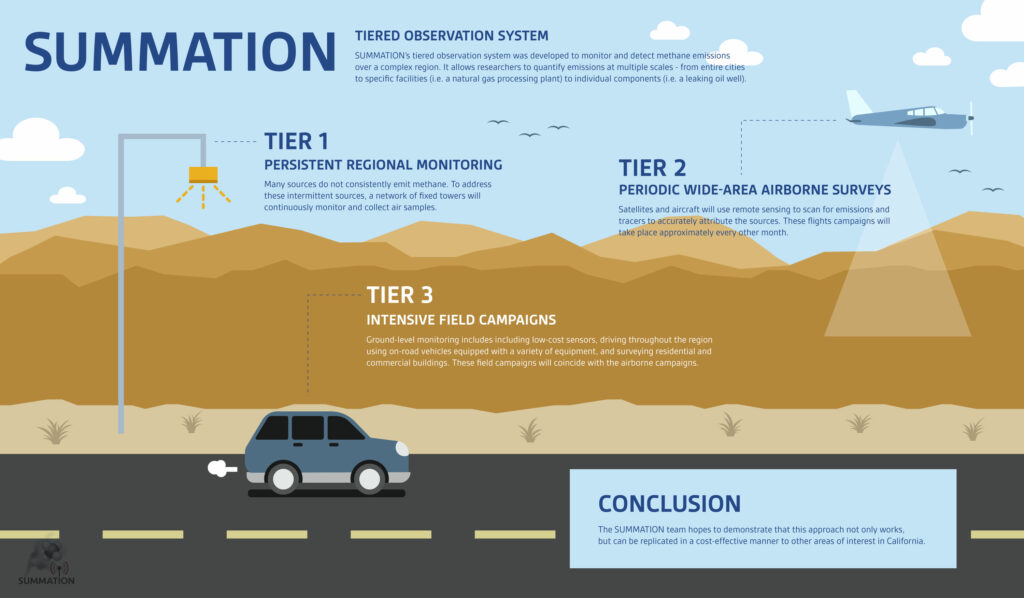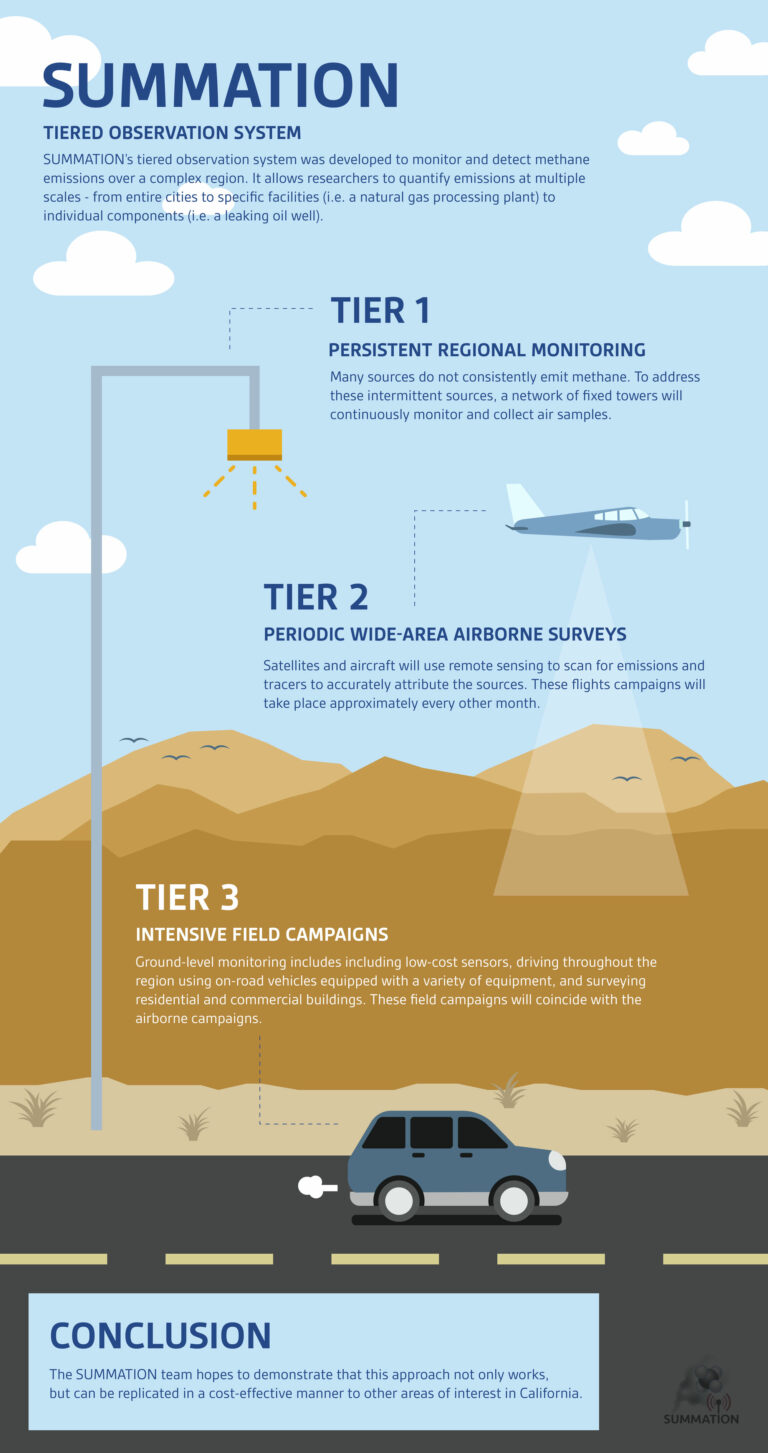What is the summation project?
SUMMATION is short for SUper-eMitters of Methane detection using Aircraft, Towers, and Intensive Observational Network. The project was created in response to California law AB1496 which calls for improving the monitoring and measurement of methane emissions and is aligned with the global pledge entered into by more than 100 countries in 2021 to cut emissions by 30% by 2030.
The Problem
Multiple studies have shown that methane emissions in California are:
• Historically underestimated and underreported
• Dominated by a relatively small number of super-emitters across oil and gas, livestock, and waste management sectors
Our Solution
A quicker, more efficient way to cut methane emissions.
In order to quantify the amount of emissions and locate their exact origins in the Southern San Joaquin Valley, SUMMATION scientists have developed a 24/7 tiered observation system that combines persistent monitoring via towers (Tier 1), aircraft surveys (Tier 2), and intense ground campaigns (Tier 3). The project consists of 6 week-long field campaigns over the course of a year.
Projected Benefits
Once the most effective technology and methodology are identified for the Southern San Joaquin Valley study area, they may be replicated throughout the state and other areas to identify other super-emitters, which will effectively:
• Reduce emissions of greenhouse gasses and slow global warming
• Improve public health by limiting exposure to gasses and odorants, with the greatest potential impact on lower income communities
• Reduce the risk of catastrophic events with early detection and mitigation
• Lower costs and reduce natural gas losses
• Prevent disruptions to California’s natural gas infrastructure
Projected Benefits
Once the most effective technology and methodology are identified for the Southern San Joaquin Valley study area, they may be replicated throughout the state and other areas to identify other super-emitters, which will effectively:
• Reduce emissions of greenhouse gasses and slow global warming
• Improve public health by limiting exposure to gasses and odorants, with the greatest potential impact on lower income communities
• Reduce the risk of catastrophic events with early detection and mitigation
• Lower costs and reduce natural gas losses
• Prevent disruptions to California’s natural gas infrastructure
Estimated Results Quantified
Mitigating the 37.5 Gg CH₄/year of associated emissions from the oil and gas sector in the Southern San Joaquin Valley will result in: ~20 million Gg CH₄/year saved, valued at ~$13 million/year.
This mitigation will lower greenhouse gas emissions by 0.8 million tonnes CO₂/year, Volatile Organic Compounds by ~12,000 tonnes/year, and Hazardous Air Pollutants by 250 tonnes/year.
In total, the damages from these emissions are valued at $143 million/year.
Our Experts
SUMMATION is led by scientists from Lawrence Berkeley National Laboratory (Berkeley Lab), a U.S. Department of Energy national laboratory managed by the University of California.


